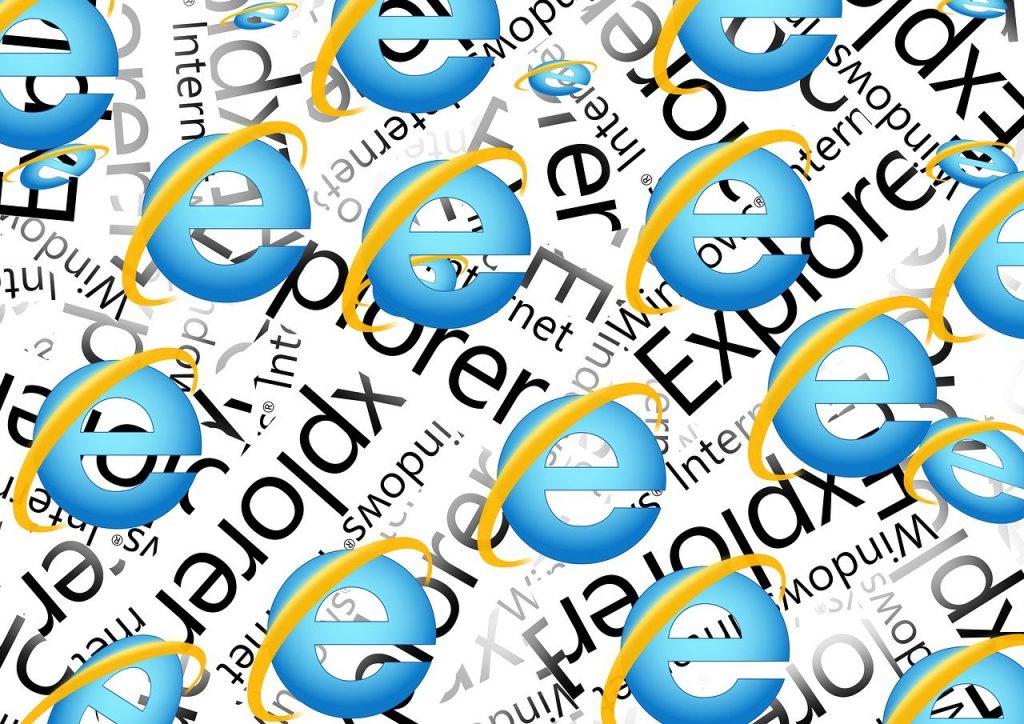The Rise and Fall of Internet Explorer

For over a decade, Internet Explorer dominated the web browser market with peak market share reaching 95% in the early 2000s. Its meteoric rise from 1995 to the early 2000s established it as the world’s default gateway to the web. However, a multitude of factors including security vulnerabilities, lack of innovation, anti-competitive practices, and the explosion of alternative browsers ultimately led to Internet Explorer’s gradual demise and diminished relevance in the modern browser landscape. This essay chronicles the major milestones in Internet Explorer’s journey from meteoric rise to steady fall. Analyzing the key events, missteps, competition, and technological shifts unpacks lessons on the precariousness of tech monopolies and the importance of continued innovation even at the top.
The Early Rise
• Origins: Internet Explorer originated from a license agreement in which Microsoft agreed to promote Spyglass Mosaic as the browser built into Windows 95 in exchange for a cut of IE revenues. It was fundamentally based on licensed Mosaic code.
• Integration into Windows 95: Bundling Internet Explorer version 1.0 into the Windows 95 Plus Pack in 1995 represented a pivotal early partnership between the browser and operating system. This tight integration would later prove pivotal.
• Trouncing early rivals: Internet Explorer 2.0 and 3.0 added support for SSL, cookies, and Internet newsgroups while outpacing early browser competitors like Netscape Navigator in the browser wars of 1996-97.
• Toppling Netscape: By bundling Internet Explorer with Windows and making free downloads available, Internet Explorer 4.0 captured 59% browser market share by 2000, dooming Netscape Navigator in the process.
• Peak market share: Internet Explorer 6, released in 2001, reached peak ubiquity with 95% market share by 2003. It achieved status as the undisputed browsing platform of the early internet era.
• Proprietary web growth: During its ascent, IE introduced proprietary features like XMLHttpRequest that powered web apps reliant on IE-specific technologies, further propagating its dominance.
The Long, Slow Fall
• Security vulnerabilities: Repeated high-profile IE vulnerabilities like 2004’s Download.ject enabled widespread malware attacks that tarnished its reputation as insecure compared to ascendant alternatives.
• Lack of innovation: IE6 remained largely unchanged between 2001-2006. Meanwhile, competitors introduced major innovations in speed, security, extensibility, and standards compliance that made IE feel dated.
• Emergence of competitors: Mozilla Firefox, Safari, Opera, and other browsers chipped away at IE’s lead by providing faster, safer, and more innovative browsing. Firefox’s 2004 release sparked a resurgence.
• Anti-competitive scrutiny: Microsoft’s bundling of IE with Windows led to lengthy anti-trust investigations in both the U.S. and Europe alleging anti-competitive behavior that compelled Microsoft to decouple IE from Windows.
• Rise of web standards: IE’s spotty support for CSS, HTML, JavaScript and other web standards compromised the quality of the browsing experience compared to rival browsers that better complied with published standards.
• End of preinstallment: Major PC manufacturers like Dell began preinstalling competitor browsers and giving customers browser choice, ending IE’s default bundling advantage.
• Stagnation: IE received only incremental updates between 2005-2009, falling far behind competitors adding robust features and performance optimizations annually. IE became perceived as outdated.
• Mobile disruption: IE’s dominance relied on desktop Windows but it struggled to gain relevance on mobile as iOS and Android devices disrupted traditional computing.
• Lost developer trust: Websites increasingly blocked or deterred IE users due to compatibility issues, security risks, and requirement to support legacy IE-specific code. This damaged IE’s reputation.
The Collapse
• Precipitous decline: From 2009 to 2014, Internet Explorer dropped from 65% to 12% market share in the span of just 5 years as users rapidly abandoned it for alternatives.
• Legacy support burden: Enterprise reliance on legacy web apps dependent on old versions of IE forced Microsoft to continue supporting outdated iterations, hampering progress.
• Failed reinvention: Internet Explorer 9 and later reinvented IE on modern web standards, but could not overcome stained reputation and entrenched competition after years of stagnation.
• End of dominance: By 2012, Google Chrome overtook IE as the most used browser in the world, cemented by mobile popularity. IE never regained the throne.
• Edge successor: In 2015, Microsoft officially replaced IE with the modern Chromium-based Edge browser, signaling the final chapter for IE. However, Edge also struggles for relevance today.
While still preinstalled on Windows for legacy support, Internet Explorer has faded into a relic browser notorious for vulnerabilities, incompatibilities, and lameness – a dramatic fall for the once dominant browser monopolist.
Key Factors in Demise
• Complacency: Microsoft’s IE team coasted on their market share dominance, failing to update IE meaningfully for 5+ years while scrappy rivals continuously innovated and improved.
• Security issues: High-profile attacks like Download.ject exposed IE’s security deficiencies compared to hardening rivals, damaging trust among consumers and institutions.
• Lack of extensibility: Users could not expand or customize IE’s functionality with plugins/extensions like Firefox/Chrome supported, limiting its appeal.
• Mobile miss: IE didn’t transition competently to the mobile era as iOS and Android devices disrupted computing.
• Legal actions: Anti-trust cases compelled Microsoft to decouple IE from Windows, removing its default bundled advantage that granted market supremacy.
• Web standards neglect: IE’s spotty support for CSS, HTML, JavaScript and other web standards caused compatibility issues that drove users to compliant alternatives.
• Loss of OEM preinstalls: Major PC manufacturers began preinstalling rival browsers while giving users choice, eroding IE’s ubiquity on new consumer devices.
• Negative image: Bloated vulnerabilities and enterprise reliance on outdated versions gave IE an outdated, uncool reputation that consumer browser challengers avoided.
The Moral of Internet Explorer’s Story
• Don’t rest on your laurels: IE’s 5+ years of stagnation while rivals innovated demonstrates the precariousness of monopolies that stop advancing. Complacency breeds disruption.
• Fix foundational flaws: IE’s security woes and lack of extensibility were foundational flaws not easily patched post-release compared to built-in browser extensibility.
• Embrace industry standards: Deviating from accepted web standards alienated developers and cemented IE’s reputation for compatibility issues that pushed users to standards-compliant rivals.
• Adapt to new eras: Clinging to desktop dominance rather than embracing mobile’s rise shows failure to adapt despite total reign during the previous computing era.
• Watch for anti-consumer behavior: Dubious anti-competitive practices like IE’s forced bundling opened legal liabilities and consumer resentment when alternatives emerged.
• Balance legacy and innovation: Older IE versions’ legacy support hampered development on modern standards. Companies struggle balancing legacy obligations with innovating forward.
While IE once embodied inevitable domination, its decline reinforces that no technology monopolist is immune from disruption given complacency. However, valuable lessons learned can help today’s tech giants authentically address flaws and avoid following in IE’s footsteps into irrelevance.
Internet Explorer’s story charts the rapid ascent, painful stumbles, and drawn-out demise of the once ubiquitous web browser. IE served as the gateway to the internet for over a billion users at its peak. However, its downfall offers cautions against complacency, theimportance of extensibility, the need to embrace industry standards, and warnings about anti-competitive behavior that came back to haunt the tech titan. No matter how dominant, every industry leader risks disruption if they stop innovating for the future. For browser developers and technology companies today, Internet Explorer’s decline offers critical lessons on avoiding the pitfalls of stagnation and maintaining perspective despite achieving widespread adoption.







